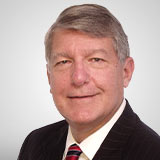John Thomas explains that even individual traders can hedge their risk and trade profitably by imitating the model used by many hedge fund managers.
Today we’re talking about how to trade like a hedge fund manager with John Thomas. John, you mentor individuals in best trading practices; give us some of the highlights.
I think individuals have a lot to learn from the techniques that the major hedge funds use to bring the stellar returns, and it’s really not that difficult for them to learn.
Simple things like risk control, asset allocation, discipline, knowing when to trade and when not to trade, these can boost your returns tremendously, and anybody can do it as long as they’re willing to put in the time and the work.
What do you find are the most difficult practices for people to employ?
Buy low, sell high…how about that one? Because the instinct for most people is to do the opposite: panic and sell out at the bottoms; panic and buy at the top, afraid that they’re missing something, and in actual fact, these are the worst times to do your trades.
What I try and do is teach the discipline to go against the trend and then go for outside returns.
See related: 5 Contrarian Investment Ideas
With all the market volatility that we’ve seen recently, how has that changed your methodologies?
Well my methodology hasn’t changed. What’s happened is we’re now moving in fast forward, so our rate of trading has gone up tremendously.
In a normal month, we may put out two, three, four trade alerts; in August, we put out 26, and it’s been the most profitable time since the inception of our strategy.
With this kind of volatility, you have to learn to use it to your advantage and start doing a lot of rapid, profitable trades.
See related: 6 Tips for Trading Volatile Markets
You use a lot of different asset classes; how do you determine the right mix?
I look at the whole world. I look at the most expensive things in the world and try and short them; I look at the cheapest in the world and try and buy them. Over time, your shorts go down, your longs go up, and you’re making money on both sides of the equation.
Now, in the real world, it doesn’t always work out like that, but approaching things from that point of view gives you a definite advantage over the rest of the people in the marketplace.
Do you find that when clients come to you for the mentoring, maybe they know a bit about trading stocks but know nothing about currencies, or vice versa, and how do you consolidate these approaches for them?
Often, individuals come in knowing pretty much nothing except that there is a thing called the stock market and they’ve heard stories of people making money in it but they don’t really know how to go about it.
We have those people come in, we educate them from scratch, basically turn them into professionals. We also get professionals who come in who have a great deal of knowledge about a single market like foreign exchange, like bonds, like technology stocks.
What we do with them is we broaden out their knowledge to include all asset classes around the world and how to go about looking for both long and short plays.
We give breadth to the professionals; we give depth to the new individuals, and at the end of the day, everyone gets pretty good at what they do.
Related Reading:





















